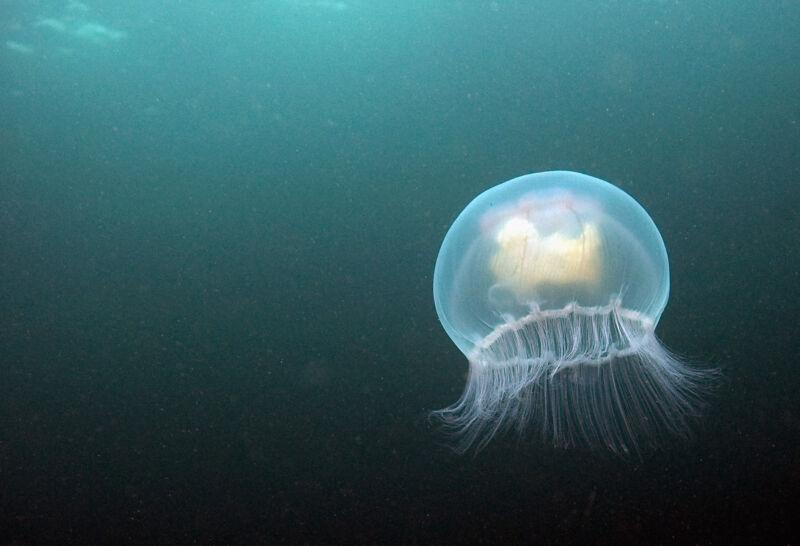The sensation of hunger seems pretty simple on the surface, but behind the scenes, it involves complicated networks of sending and signaling, with multiple hormones that influence whether we decide to have another serving or not. The ability to know when to stop eating appears to be widespread among animals, suggesting that it might have deep evolutionary roots.
A new study suggests that at least one part of the system goes back to nearly the origin of animals. Researchers have identified a hormone that jellyfish use to determine when they're full and stop eating. And they found that it's capable of eliciting the same response in fruit flies, suggesting the system may have been operating in the ancestor of these two very distantly related animals. That ancestor would have lived prior to the Cambrian.
Feeding the fish (or jellyfish)
Given they lack any obvious equivalents to a mouth, it might seem like it would be tough to determine whether a jellyfish is even eating, much less hungry. But a team of Japanese researchers showed that the jellyfish species Cladonema pacificum has a bunch of stereotypical behaviors while feeding, including that their tentacles latch onto prey and that they then withdraw the tentacle into the bell so that the prey can be digested. And, if you keep feeding the jellyfish brine shrimp, eventually this process will slow, indicating that the animal is sensing it is well fed. (There's a movie available of the jellyfish feeding.)
To find out how this was controlled, the researchers dissected the central core of the jellyfish, which contains its digestive organs, and the bell, which contains much of the animal's nerve net. They then looked at which genes were active in these tissues when the animal was either starved or satiated. And, just to be sure there was no confusion, they also generated a complete list of the genes active in the brine shrimp that were fed to the jellyfish. From this, they developed a list of potential hormones that were active when the animal was fed but not when it was hungry.
All told, they came up with 43 genes that encode small molecules that could potentially act as a hormone. These are typically normal-sized proteins that have a repeating sequence such that they can be chopped up to form a collection of short amino acid chains called peptides. Sometimes, these peptides are modified further before being used as hormones.
The researchers chemically synthesized all 43 genes and tested whether they could modify feeding behavior. They found five that did; four of them were activated after an animal had been fed to the point where it stopped feeding.
For the study, the researchers chose to focus on one of these, with the unfortunate name (N)GPPGLWamide (they referred to it as GLWa, and I'll do the same). Treating jellyfish with GLWa suppressed tentacle contraction during feeding to about the same degree as feeding the animals multiple brine shrimp. It was also interesting because the gene that encodes it is found in a large range of Cnidarians, the group of radially symmetric organisms that include jellyfish, corals, and anemones. That suggests it may play a role in regulating appetite in various species.



3175x175(CURRENT).thumb.jpg.b05acc060982b36f5891ba728e6d953c.jpg)

Recommended Comments
There are no comments to display.
Join the conversation
You can post now and register later. If you have an account, sign in now to post with your account.
Note: Your post will require moderator approval before it will be visible.